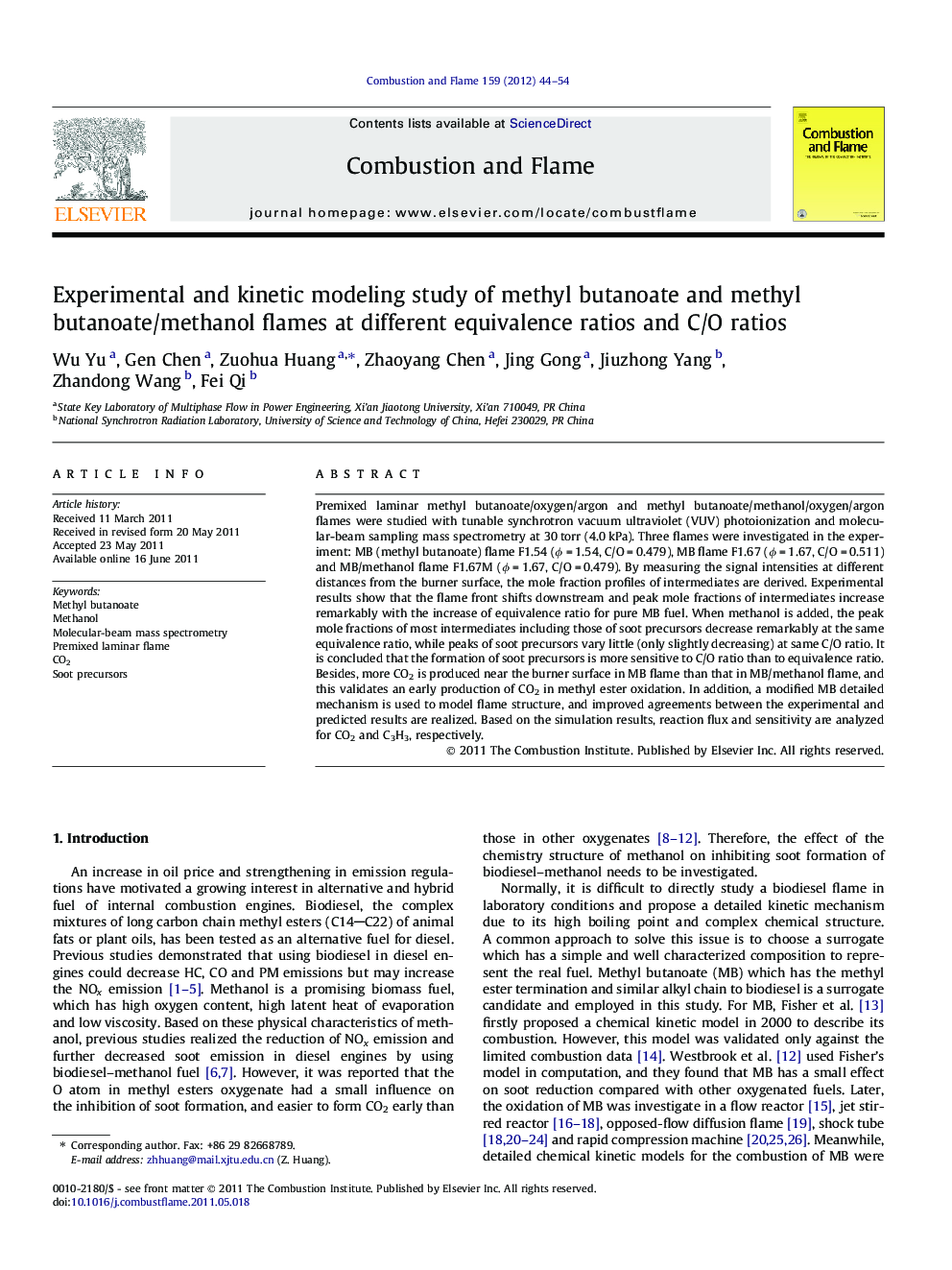| Article ID | Journal | Published Year | Pages | File Type |
|---|---|---|---|---|
| 169153 | Combustion and Flame | 2012 | 11 Pages |
Premixed laminar methyl butanoate/oxygen/argon and methyl butanoate/methanol/oxygen/argon flames were studied with tunable synchrotron vacuum ultraviolet (VUV) photoionization and molecular-beam sampling mass spectrometry at 30 torr (4.0 kPa). Three flames were investigated in the experiment: MB (methyl butanoate) flame F1.54 (ϕ = 1.54, C/O = 0.479), MB flame F1.67 (ϕ = 1.67, C/O = 0.511) and MB/methanol flame F1.67M (ϕ = 1.67, C/O = 0.479). By measuring the signal intensities at different distances from the burner surface, the mole fraction profiles of intermediates are derived. Experimental results show that the flame front shifts downstream and peak mole fractions of intermediates increase remarkably with the increase of equivalence ratio for pure MB fuel. When methanol is added, the peak mole fractions of most intermediates including those of soot precursors decrease remarkably at the same equivalence ratio, while peaks of soot precursors vary little (only slightly decreasing) at same C/O ratio. It is concluded that the formation of soot precursors is more sensitive to C/O ratio than to equivalence ratio. Besides, more CO2 is produced near the burner surface in MB flame than that in MB/methanol flame, and this validates an early production of CO2 in methyl ester oxidation. In addition, a modified MB detailed mechanism is used to model flame structure, and improved agreements between the experimental and predicted results are realized. Based on the simulation results, reaction flux and sensitivity are analyzed for CO2 and C3H3, respectively.
